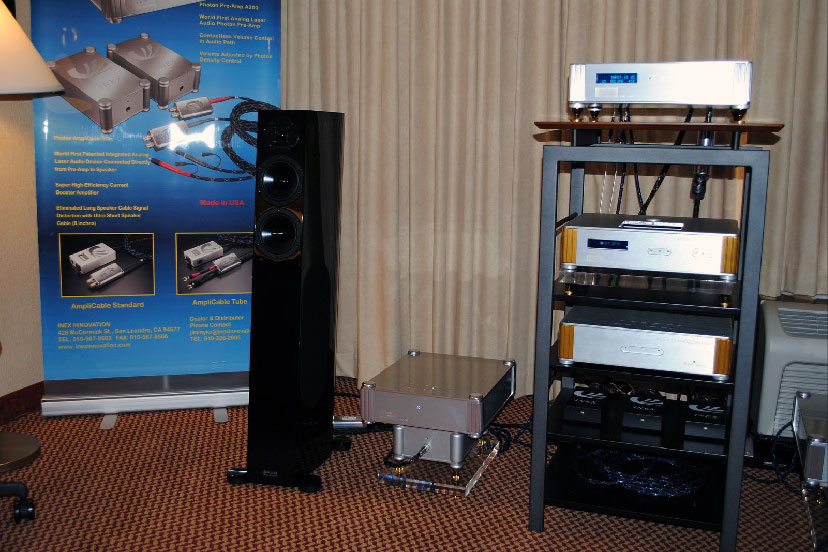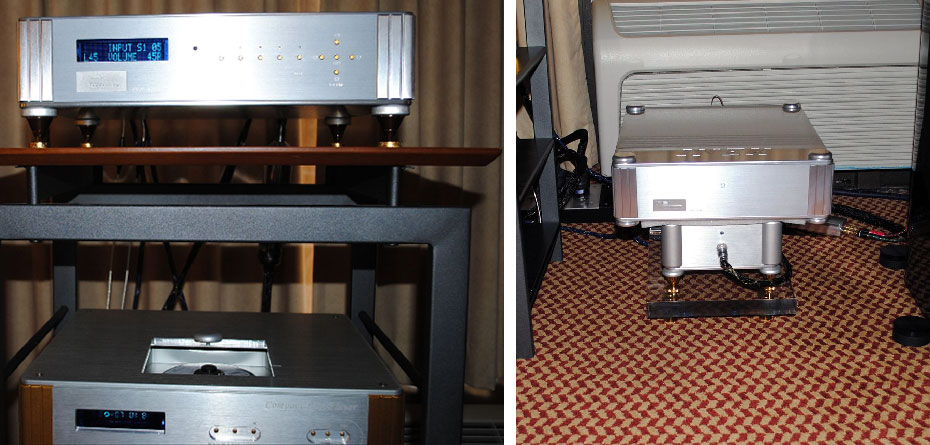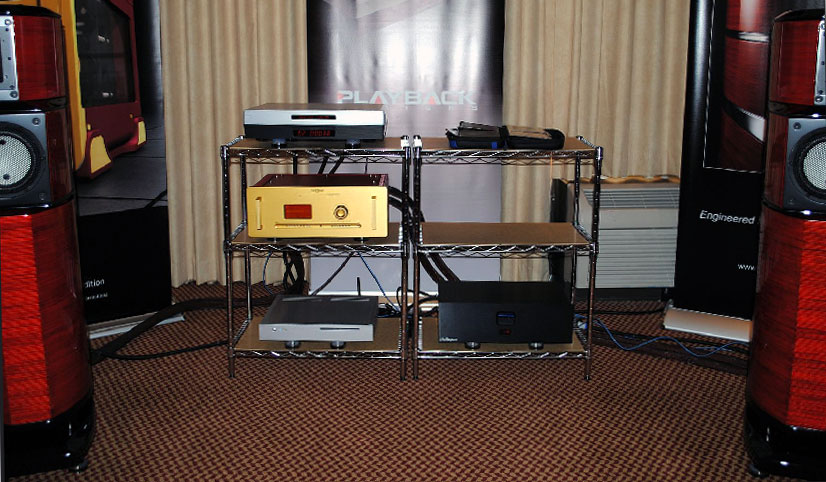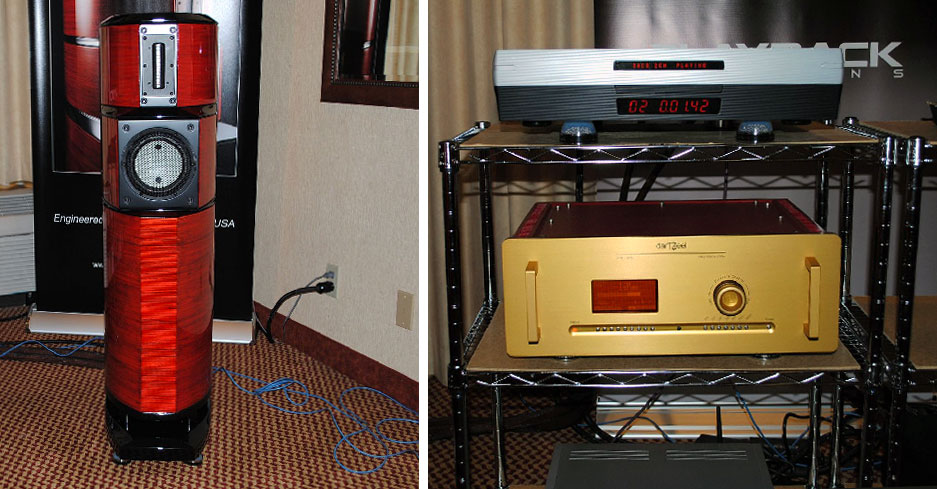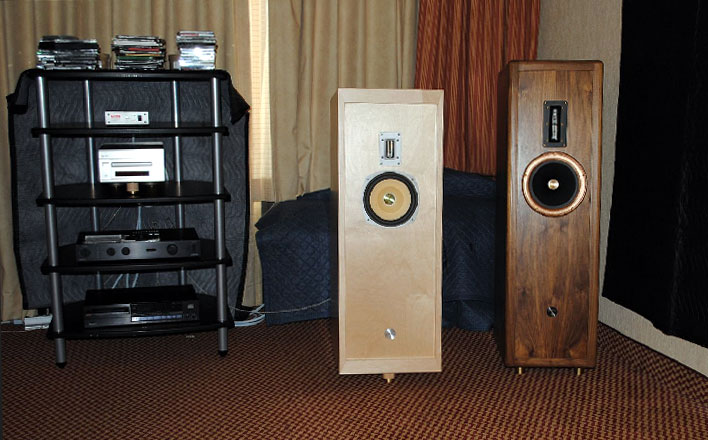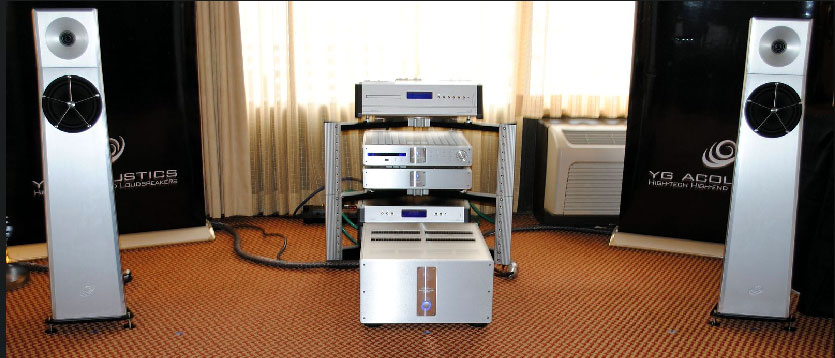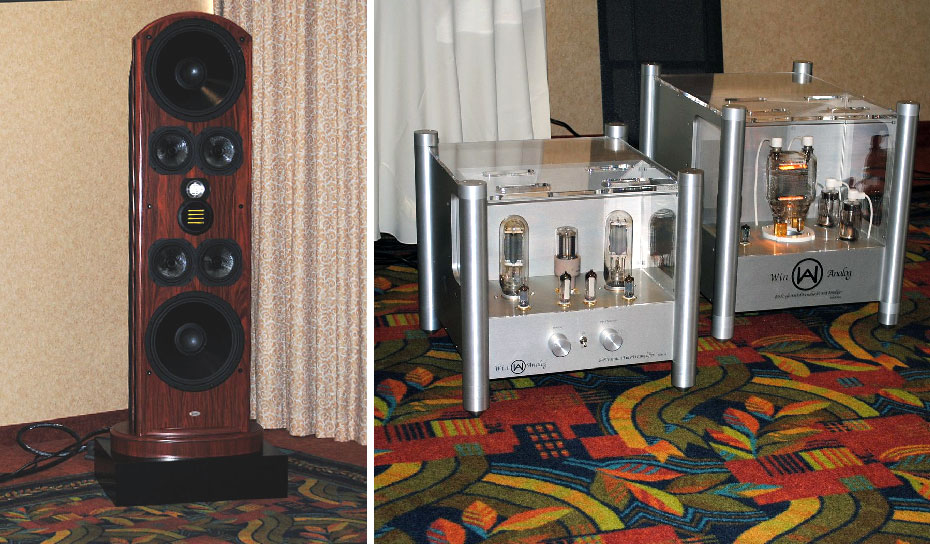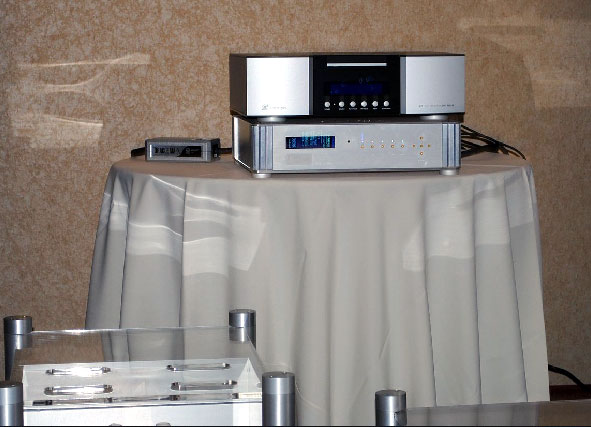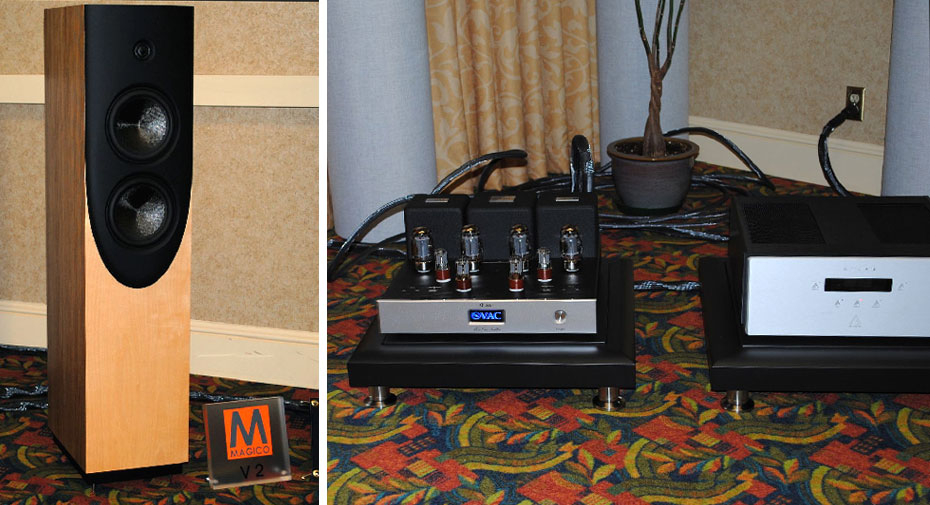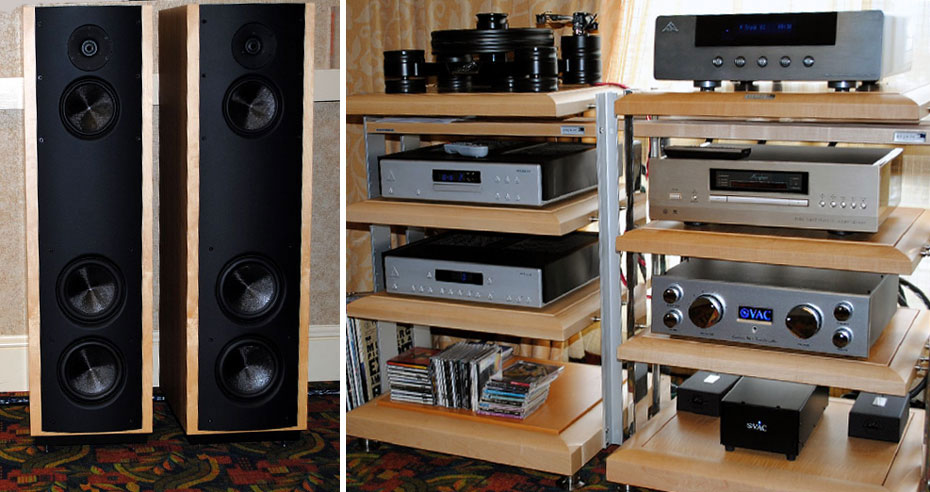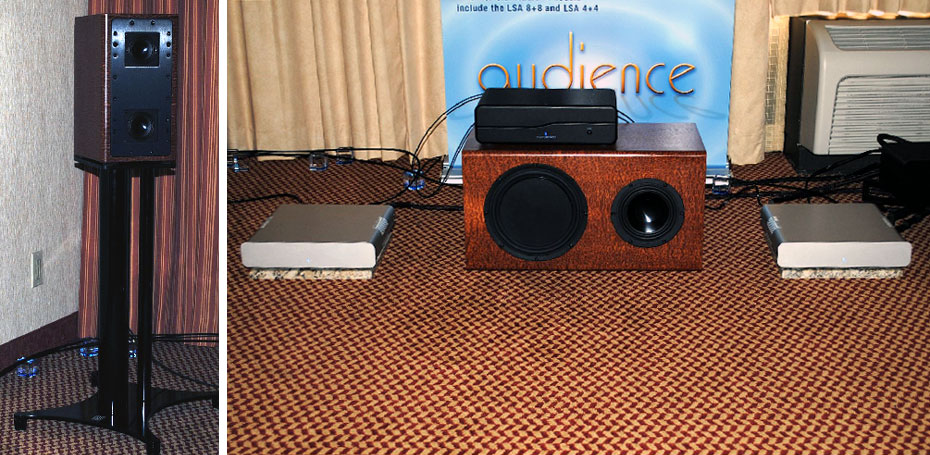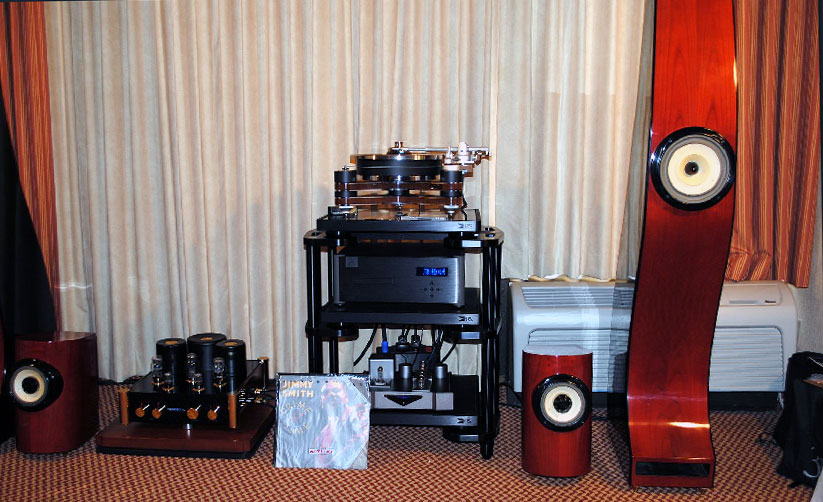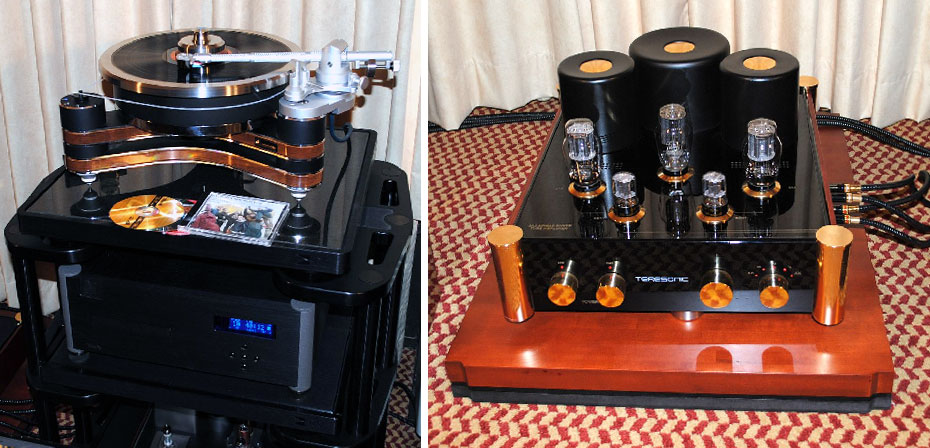Normally, when you read about the first year of any event, you expect apologies for what the writer hopes will develop over time into something interesting. In this particular case, that would be a major mistake. CAS was many things, but clearly not something which requires an apology. It was widely successful, easily exceeding the expectations of the exhibitors and the event’s organizer, Constantine Soo. The attendance was almost twice the expected 1100, heaviest on Friday and Saturday but constant on Sunday. There were 34 exhibits with over 100 brands. While the rooms were typical hotel suites with furniture removed, the sound was uniformly quite good and in some instances, very good. Exhibitors were very friendly, possibly because many were dealers from the area. This is not to say there were not a few teething pains. Why is there always an elevator out and problems with parking? Likewise the food could have been better at the hotel, particularly the service which was stretched. Otherwise, things were great. I am hoping that in the future, Constantine will find a larger venue closer in to the city and more accessible to the nightlife and fine restaurants. If attendance increases, that will be a necessity. Note that the remainder of the article addresses the sound and the equipment.
INEX Innovation
The first room that I visited on Friday was hosted by Inex Innovation which featured a line of equipment based around the use of light to couple various stages of the electronics, including a contactless volume control using an analogue laser, coupled with a photon density volume control and cabling that again substituted light/ optical cabling for wire. This has a dramatic impact on noise by eliminating the possibility of ground loops. The sound was extremely clean and distortion free with excellent dynamics. In particular a recording of Eva Cassidy’s voice was superb.
Dartzeel
I have come to expect that any room hosted by Jonathan Tinn will have absolutely gorgeous sound. The system used a Playback Designs SACD player, the new Dartzeel CTH-8550 integrated amp and Evolution Acoustics MMMiniTwo with integrated subwoofers speakers. We began by listening to Missa Creola with Jose Carreras. Male voice was absolutely superb as was intelligibility of voices. Height was very believable. On a Haydn piece for string bass, the string tone was excellent. At that point, we switched to a Studer A810 reel-to-reel tape machine. WOW! The space and dynamics created by the Studer were amazing. Normally, I am not a fan of single-brand systems; however, if I wanted a superb system and wanted to avoid the time, effort, expense and mistakes that assembling such a system requires, I would go to JTinn and ask him to construct a system for me. This is one of the two or three best systems at the CAS. I had forgotten to mention that all equipment including the speakers was supported by a new footer which JTinn is distributing. I will need to hear these in my system, they appear to be excellent.
Tonian Speakers
The speakers being demonstrated were the Classic 7.1 B1 which uses full-range drivers manufactured by AER in Germany. The tweeter is built in-house. Transients were great, possibly due to the tweeter or perhaps the unique resonance properties of the cabinets. The Classics have an efficiency of 95 dB. The top-end was very clean. Cymbals displayed an excellent leading edge and nice decay. My only wish is that the exhibitors had chosen to use better associated electronics; however, even with the questionable quality of electronics, the basic virtues of the speakers were evident.
YG Acoustics
I have not been a particular fan of YG Acoustics speakers in the past. While I have appreciated their level of detail and transient accuracy, I have in the past thought them somewhat bright and thin. Based on several visits to their room at CAS, I may have to change my opinion. The system included the Carmel speakers. Female voice was also quite nice. dCS Scarlatti set up (clock, transport, d/a), Krell EVO 402E amp and Evolution 202 preamp, and Kimber Select cabling. The sound was extremely clean and dynamic. Bass quality was excellent with good leading edge definition. The top-end was very natural with no apparent brightness and bass was tight and impactful. I should also comment that Dick Diamond and his son Alex were excellent hosts and did a great job of setting up this system.
Legacy Audio/Win Analog
This was one of the few exhibitors that used a large suite rather than a normal hotel room. The system consisted of Legacy Whisper XD speakers, Win Analog S Series mono amps, an INEX Innovation Photon preamp, Lindemann CD player, MIT Magnum MA speaker wire and Oracle MA X interconnects. The speaker system uses a very sophisticated digital room correction system/crossover which allows an installer to insure that the interface between the speaker and the room is ideal. By Saturday afternoon, the tonal balance was nice and the bass from the 15” dipolar woofers was tight and well controlled. These are excellent speakers for large orchestral works. My only real concern was imaging which was oversized and lacked both focus and specificity.
Magico
This room was one of the two rooms on the top floor of the hotel, a few doors from the Legacy. The two rooms could not be more of a contrast. The electronics employed alternated between VAC [Phi 200 tube amp, Renaissance MkIII preamp with optional tube phonostage] and Aesthetix [Atlas Hybrid amp and Janus Signature preamp/phono] and the speakers among the Magico V2, V3 and King Electrostatics. In all cases, the system employed Kubala-Sosna cabling, either the AMR Abbington CD player or the Accuphase DP600 SACD player and ASC Tube Traps and a Finite Element stand. Analog was provided by a Transrotor Dark Star with OEM arm and Shelter 901 Mk ii cartridge. In all cases, the sound had a nice extended top-end and tight impacting bass with excellent retrieval of detail and excellent focus and imaging. For my money, I much preferred the VAC electronics; however the Aesthetics pieces were not the top of their line.
Audience
Equipment: Audience ClairAudient 2+2 speakers (one way, crossoverless A-3 Audience drivers); Audience Wavemaster amps (class D); and Audience cabling and powerline conditioning. Just a word about the Wavemaster amps, in many instances, class D amps are basically OEM ICEPower modules housed in fancy box provided by the company marketing the amps. In this instance, Audience employed the designer of Kharma’s Class D amps [Bruno Putzeys, a design engineer at Phillips] to significantly redesign an OEM provided ICEPower module. This included an all discrete Audience front-end and the replacement of all parts on the modules with upgraded parts. While I do remember what was said about the power supply, I would assume that Audience has also provided their expertise in this area. The prototype provided 200 watts at 8 ohms and will sell for the neighborhood of $10K.
None of this would really make any difference had the sound not been good. Low-level resolution was superb and dynamics were excellent. The sound was punchy with excellent transients. Given the size of the cabinet, it was not surprising that the speakers had some difficulty with sustained low notes in Bela Fleck’s “Cosmic Hippo”.
Teresonics
Equipment: Benz Micro Ruby Z cartridge, Clearaudio Universal Tonearm and Innovation Wood Turntable, Fosgate Phonostage, Teresonics 2A3 SET 5 watt integrated amps and Teresonics Ingenium Silver speakers.
These speakers are of the extreme efficiency, no crossover, silver speaker voice coil, single driver breed. Efficiency is somewhere around 104 dB which makes them ideal for a single-ended, class A amp. Sound on vinyl was quite nice. Saxophone in particular was very lifelike. Of late, I find myself playing the Neil Young at Massey Hall discs, particularly the “Ohio” cut. On the Teresonics system, the placement of Young’s voice was nicely locked in the center of the soundstage. The guitar seemed to lack a bit of presence but voice had good intelligibility.
- (Page 1 of 1)

